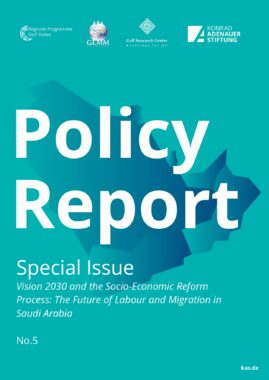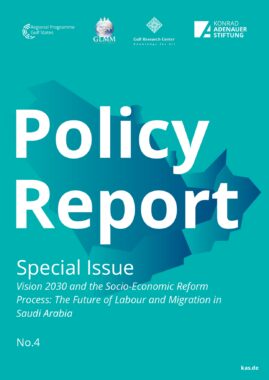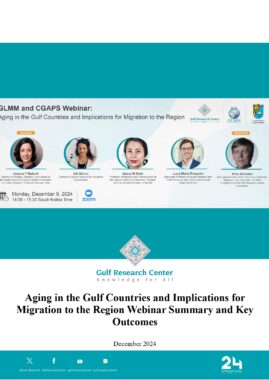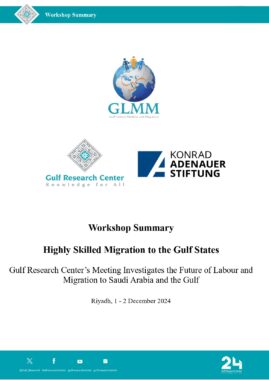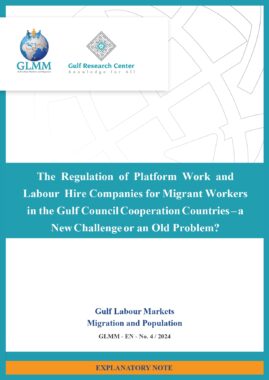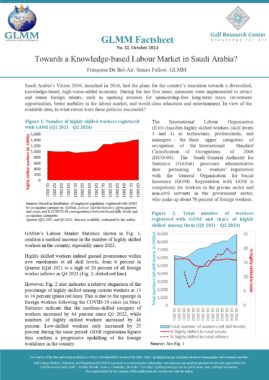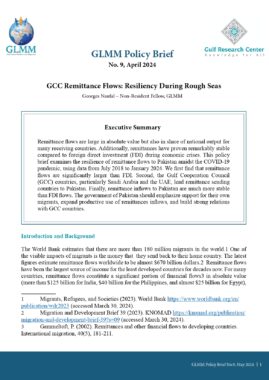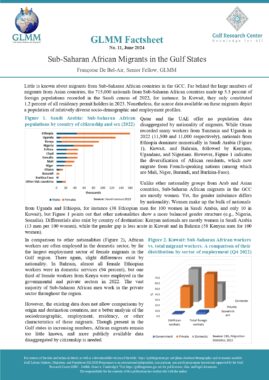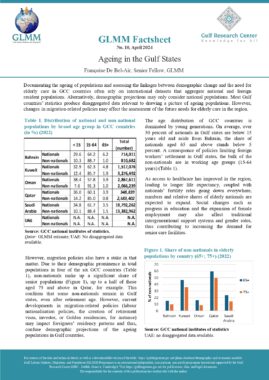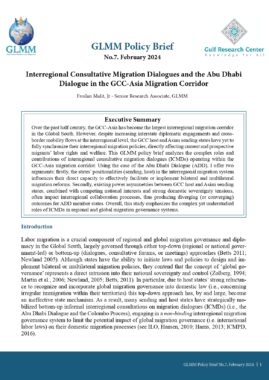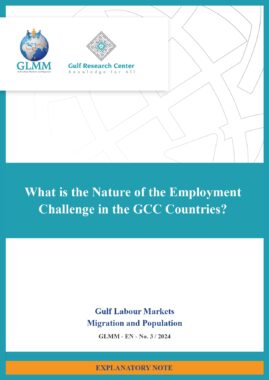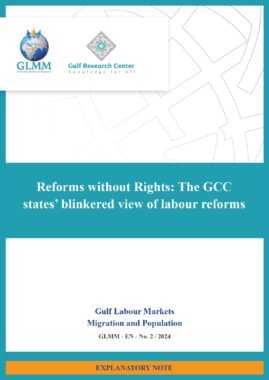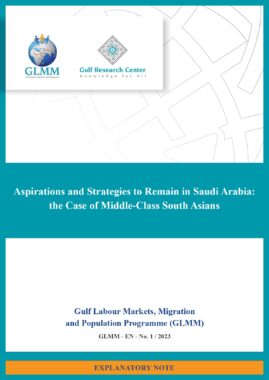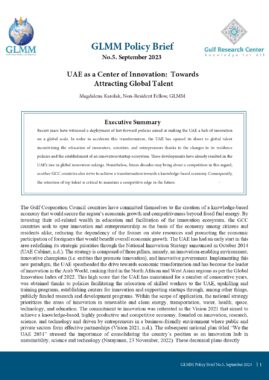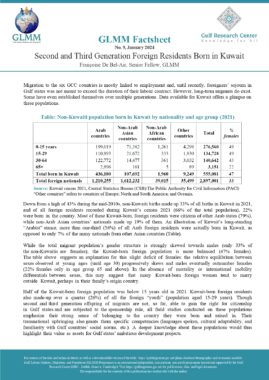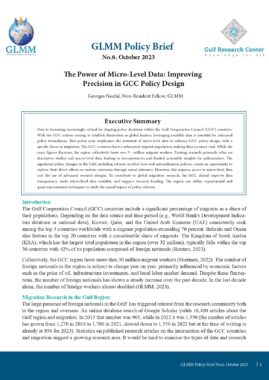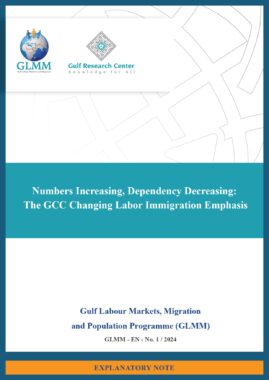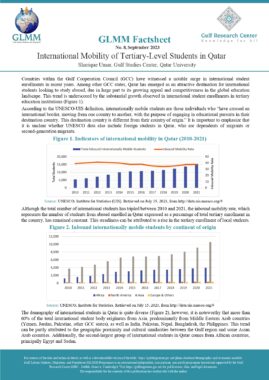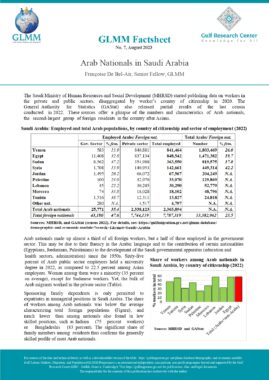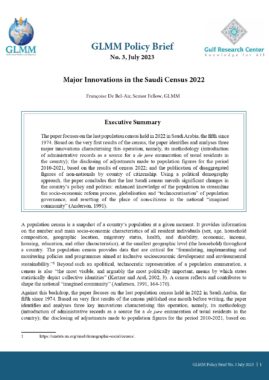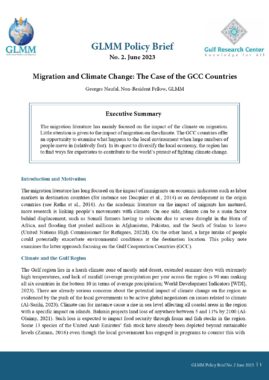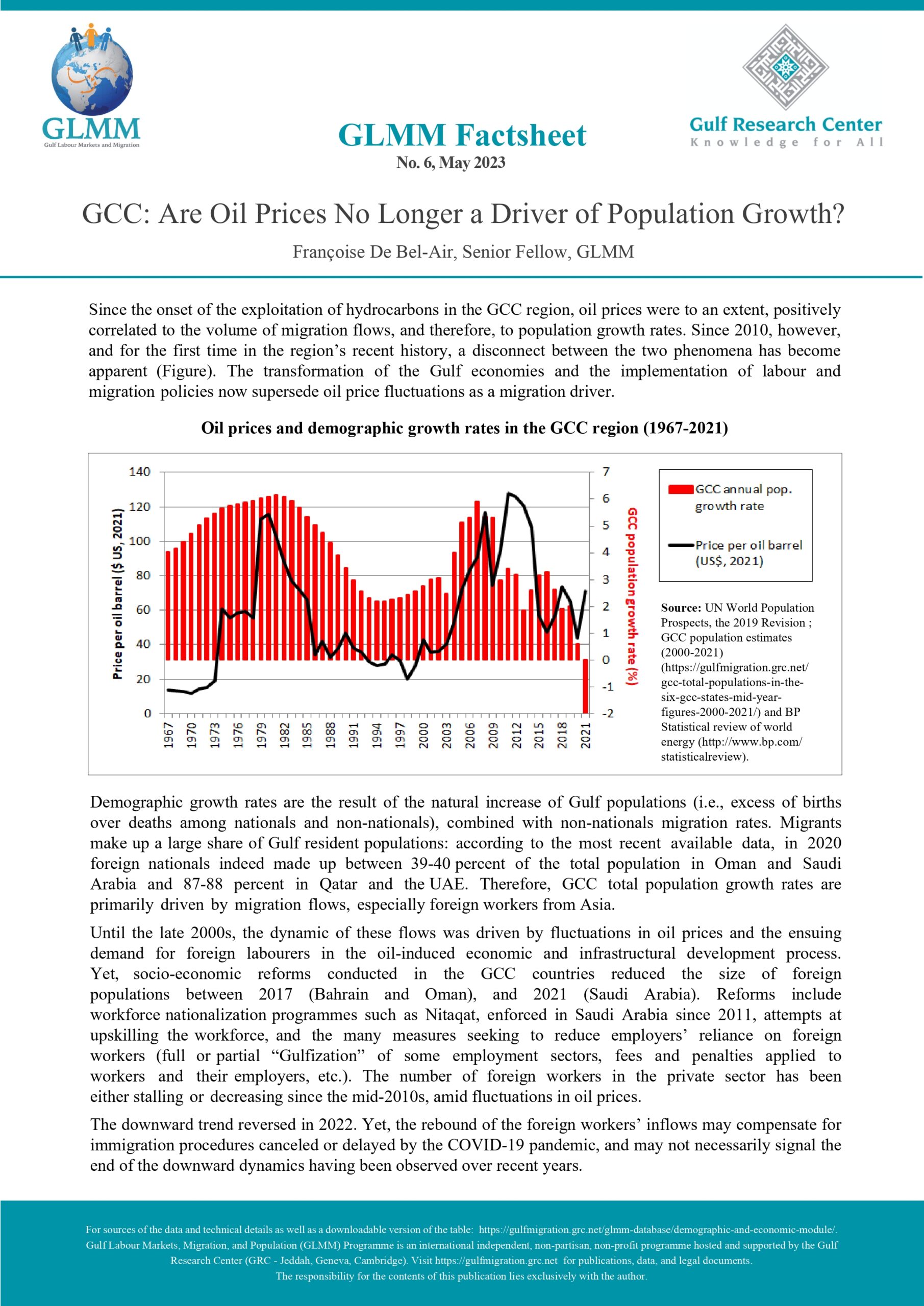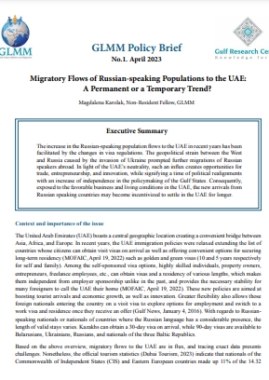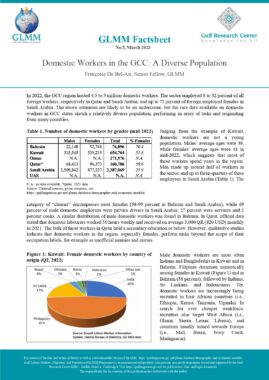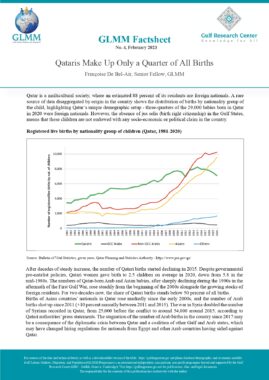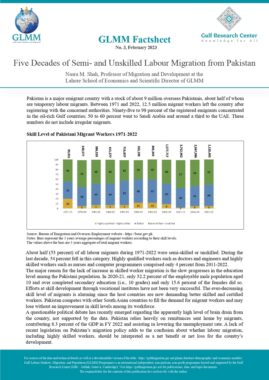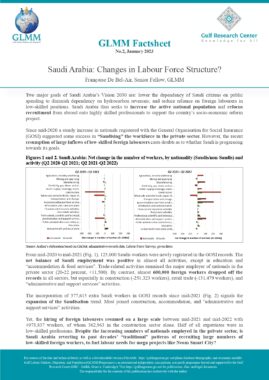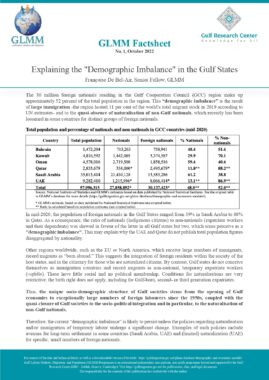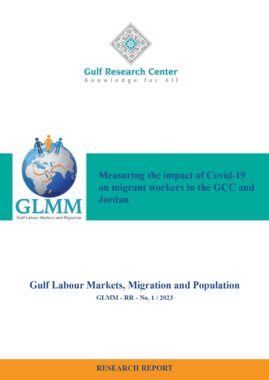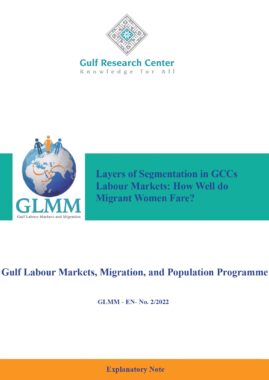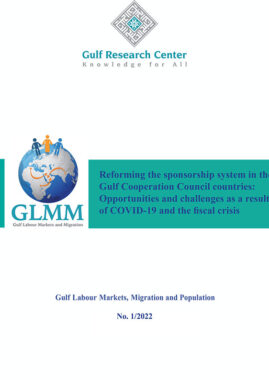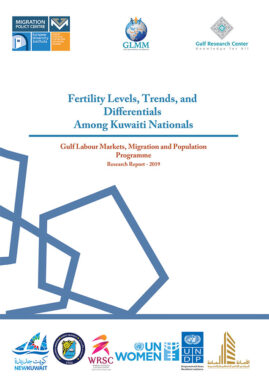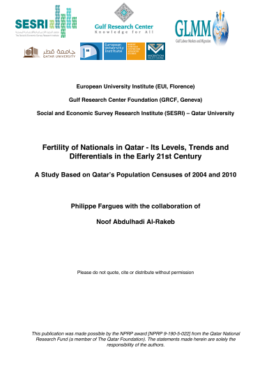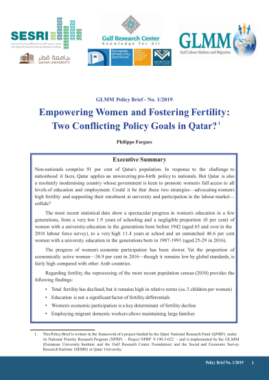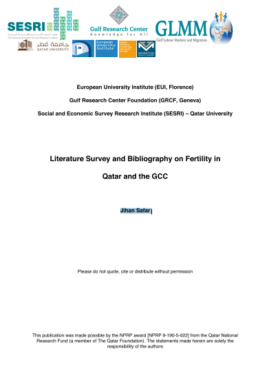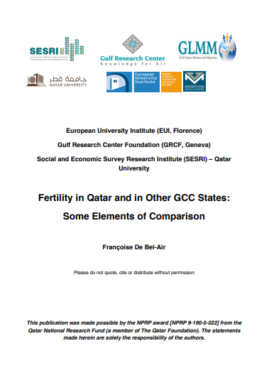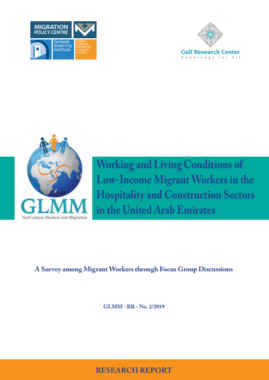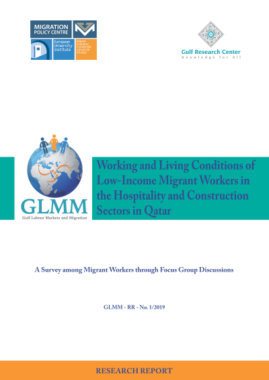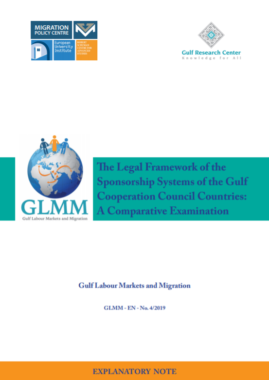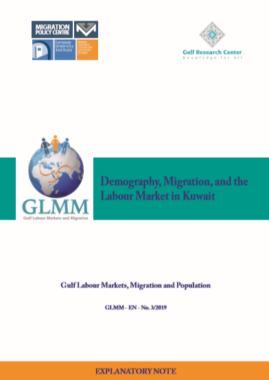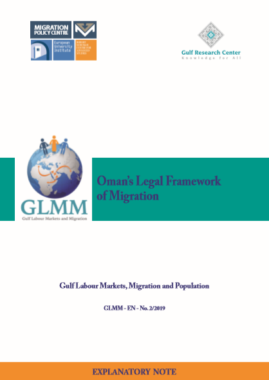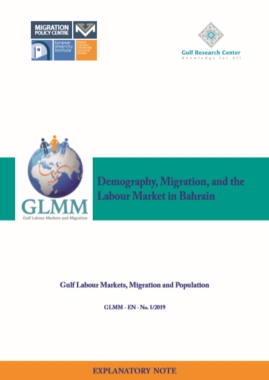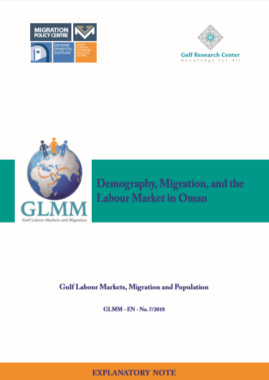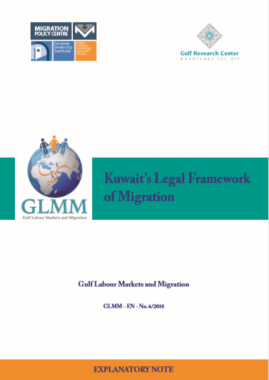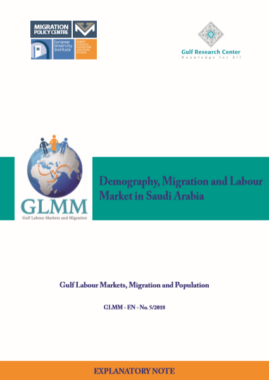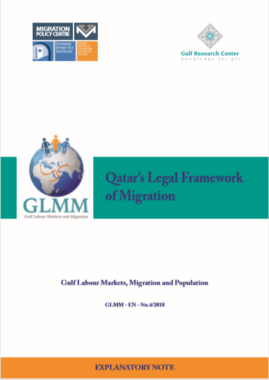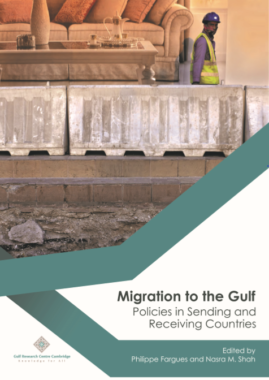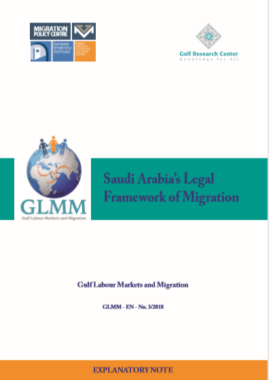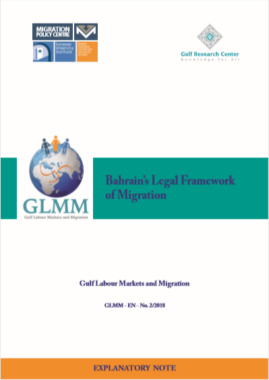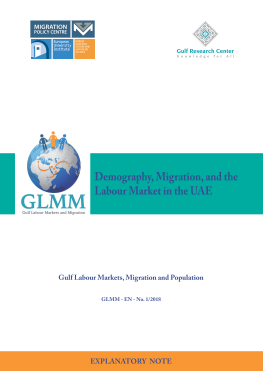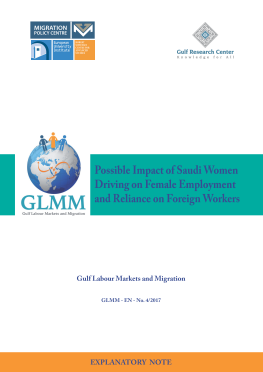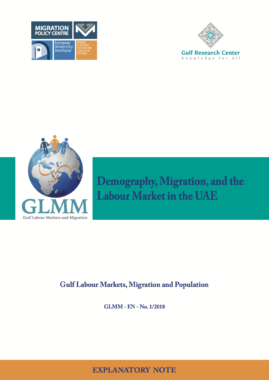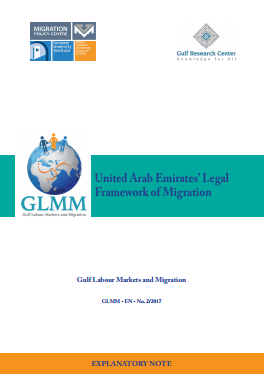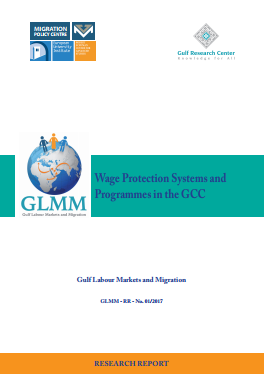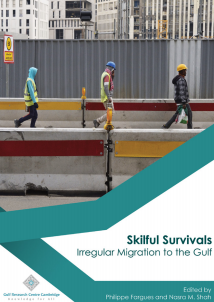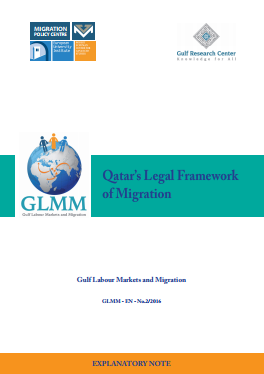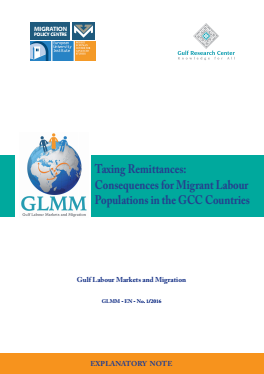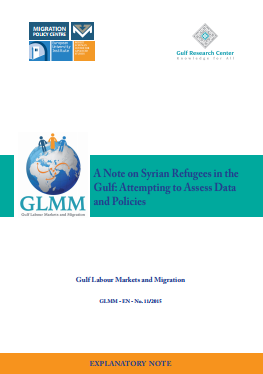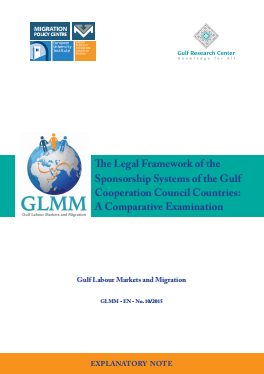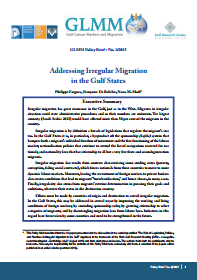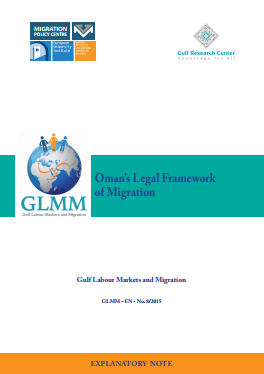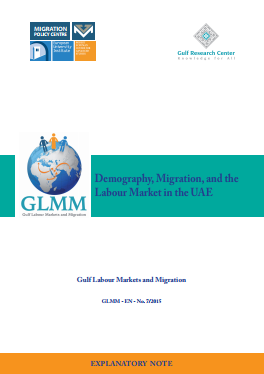Project: Highly Skilled Migration to the Gulf States
Highly Skilled Migration to the Gulf States: How do GCC Countries Fare in the Global Competition for Talent?
The six GCC countries are the first migration hub in the global South, and the third destination for migrants worldwide after North America and the EU. Over the last decade, all countries in the region started conducting very ambitious socio-economic reform projects to transition from oil-based, rentier economies to diversified, knowledge-based development.
Therefore, Gulf states are now competing globally to attract and retain the best talents from everywhere in the world. The project explores the various dimensions of Gulf states’ attractivity to highly skilled migrants and assesses the place of Gulf states in the global competition for talents vis-à-vis other migrants-receiving regions.
The project has three phases.
The project has been implemented in cooperation with and financial support from the Regional Programme Gulf States (RPG) Konrad Adenauer Foundation (KAS) – https://www.kas.de/en/web/rpg.
Phase one
In phase one of the project (completed in 2024), contributions analysed and assessed migration-related policies in three receiving Gulf states (Saudi Arabia, the UAE and Qatar) since 2010, based on desk research and first-hand information retrieved from interviews with migration policy makers and other stakeholders, as well as with highly skilled migrants in GCC countries.
In order to challenge the common assumption that migration to the region is essentially driven by Gulf states’ labour demand to implement oil-funded investment initiatives, phase one of the project also focused on the drivers of emigration from five origin countries (Tunisia, Egypt, Pakistan, India and the Philippines).
Gulf states
Do they succeed in attracting and retaining highly skilled workers? Economic reform context, labour and migration policies put in place; and challenges faced.
Contributors were asked to focus on:
- Characteristics of highly skilled workers in the three countries (socio-demographic, migration and employment characteristics)
- Dynamics of attraction/retention of highly skilled migrants:
- Current and future labour needs in the framework of the technological and other changes (development of AI, knowledge-based development, decarbonization and greening of economies): new skill profiles, professions, and activity sectors on demand
- Policies towards the highly skilled workers in the three countries: policies directed at working conditions, at the overall livability especially for the workforce with family, at socioeconomic integration…)
- Outcomes of economic reforms and policies of attraction/retention of highly skilled workers on the populations of foreign workers and residents; on interactions between Gulf citizens and foreign residents; on receiving countries’ socio-economic context; on migration and geopolitics (shift in countries of origin of migrants, competition between Gulf states to attract highly skilled, …).
Countries of origin
New drivers and outcomes of emigration to the Gulf states from origin countries. Patterns of Gulf states’ attractivity to highly skilled prospective migrants, migration stakeholders’ perceptions and policies towards highly skilled emigration to the Gulf.
Contributors were asked to focus on:
- Current and future dynamics of emigration (outflows) from the five countries sending migrants to the three Gulf states
- Numbers, socio-demographic and professional profiles of actual migrants
- Specific dynamics (regional, professional, …)
- Migration processes (networks, use of placement agencies, etc.)
- Highly skilled perceptions of Gulf states and migration intentions
- Policies and stakeholders’ perceptions regarding highly skilled emigration; and regarding migration of citizens to Gulf states
- Socio-political and socio-economic background of emigration of the highly skilled to the Gulf (from individual to structural drivers)
- Outcomes of emigration to the Gulf in terms of development of the origin country (financial and other remittances, investments, …).
Output
Eight policy briefs have been published from the first phase of the project and are available here:
The eight Research Reports on which these Policy Reports are based will be published in March 2025.
Workshop 1-2 December 2024
All six studies were presented and discussed in a workshop for which a summary is available: https://gulfmigration.grc.net/wp-content/uploads/2025/01/GLMM-Workshop-Future-of-Saudi-and-Gulf-Migration-Riyadh-1-2-December-2024-Summary-2024-12-12-1.pdf.
Webinar 22 January 2025
Highly Skilled Migration to Saudi Arabia: Labour Policy Reforms and the Global Competition for Talents – Webinar held on 22 January 2025: https://gulfmigration.grc.net/wp-content/uploads/2025/02/GLMM-Webinar-No.6-Highly-Skilled-Migration-Saudi-Arabia-22-January-2025-Summary-Final-2025-02-03.pdf.
Workshop GRM 22-24 July 2025
In the framework of the 15th Gulf research Meeting (GRM) which will be held in Cambridge UK from 22 till 24 July 2025 – https://gulfresearchmeeting.net – GLMM organizes a workshop entitled “Highly Skilled Migrants and the GCC countries Drivers, Perceptions, Policies, and New Dynamics”: https://www.gulfresearchmeeting.net/documents/6739b50a9af26GRM2025WorkshopDescription.pdf.
Phase two of the project
In phase two of the project (planned for 2025) we will identify trends and characteristics of highly skilled secondary or re-migration from the GCC to selected Western states and analyse migrants’ motivations and strategies to return (or not) to the Gulf region.
